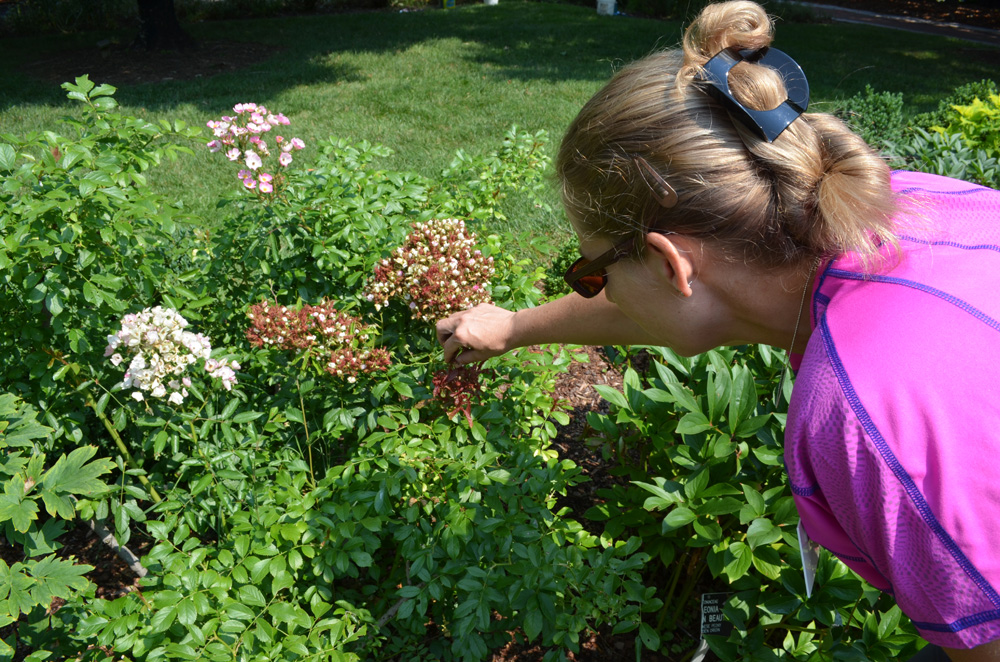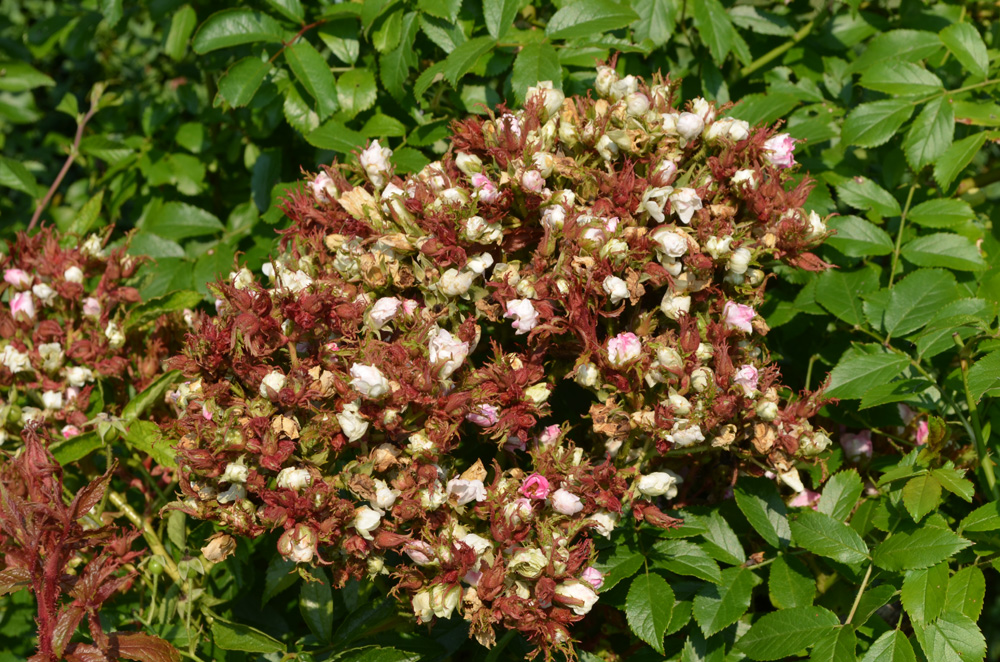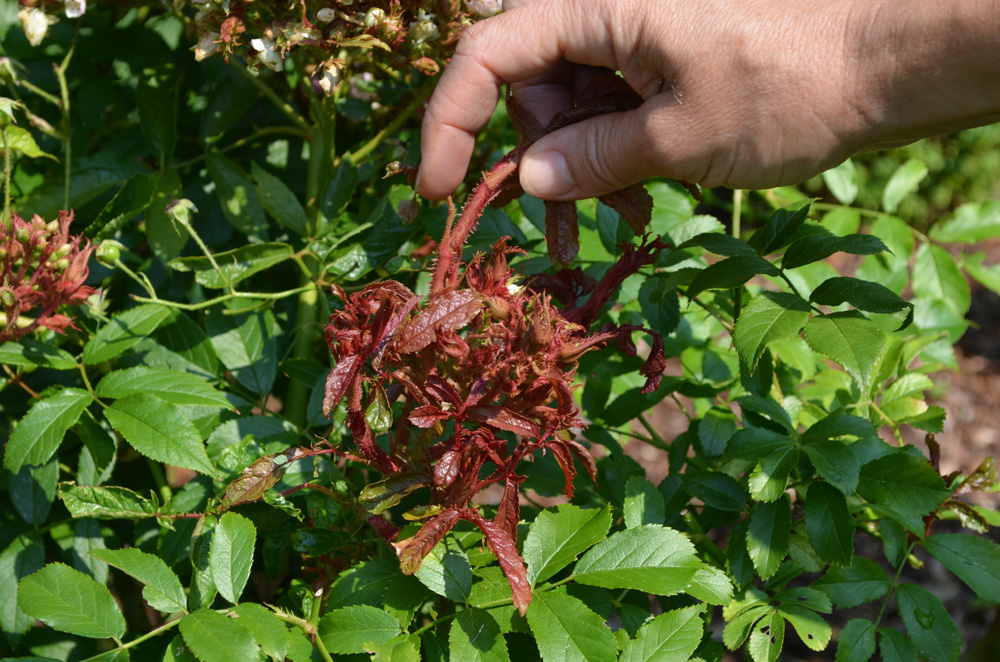Rose Rosette Disease
Rose rosette disease is a funny thing. At first it doesn’t look like there’s a problem with your roses, it just looks like there is alot of new growth, and the foliage is more pliant, more red, and almost furry, instead of prickley. (Did you know that roses have prickles, not thorns? Botanically speaking, thorns are derived from shoots and therefore can only arise from a bud. Prickles are derived from the epidermis, a skin-like layer covering the surface of plants, and so can arise anywhere on a plant.) But it’s easy to notice soon enough that something isn’t right with your plant. The leaves become deformed, the new growth looks strange, mutant, — and like a “witch’s broom”(….not that I’ve ever seen a witch’s broom.) In fact, rose rosette disease is also call witches’-broom of rose. It is a virus spread by garden shears or chewing/sucking insects called eriophyid mites, that can travel on the wind. You can try to prevent it from spreading in your garden by using alcohol or Lysol wipes on your pruners and shears between plants. But, sometimes there’s nothing you can do to prevent it.

Senior horticulturist Elizabeth Fogel showing rose rosette disease on one branch. The branch in the background is still healthy, but it’s only a matter of time before the whole plant is infected.
Recently we had this virus appear on one of our old fashioned Victorian style roses in Grace Arents Garden, on a rose that was part of the original design from the Garden Club of Virginia restoration back in 1990. Our Rosa x ‘Ballerina’ will be replaced with an identical rose, as soon as we can find one. It has a matching sister on the other side of the arbor. Grace Arents Garden Senior Horticulturist Elizabeth Fogel says, “The best thing, if you’ve got other roses you want to protect is just to get ride of the rose as soon as you can. The bugs will bite into the plant and spread this to other plants.”
It’s important to remove the entire plant to avoid the spread of the disease to other plants, but keep in mind, sooner or later this disease will kill your rose bush anyway in 2 to 5 years. Do not compost this plant when you pull it out — throw it in trash so it doesn’t spread the disease to others.
Missouri Botanical Garden says our case of rose rosette disease fits the disease’s normal life cycle. “Transmission typically occurs between the months of May through mid-July. Symptoms from new infections usually start appearing in mid-July.” For more information, there are good resources and additional photos on their Rose Rosette webpage.

